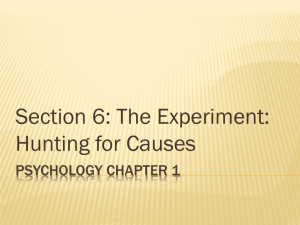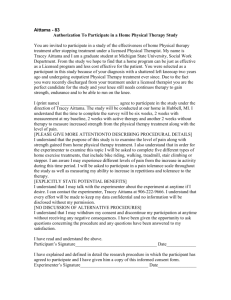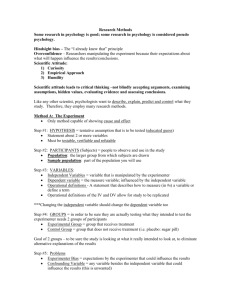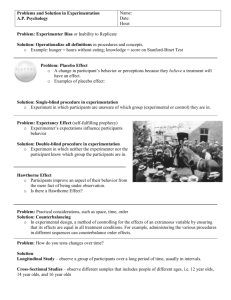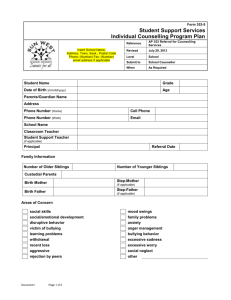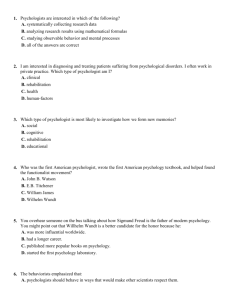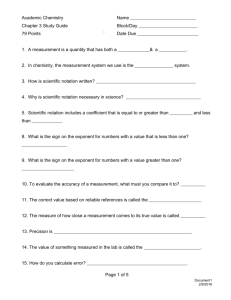research methods cut up task
advertisement
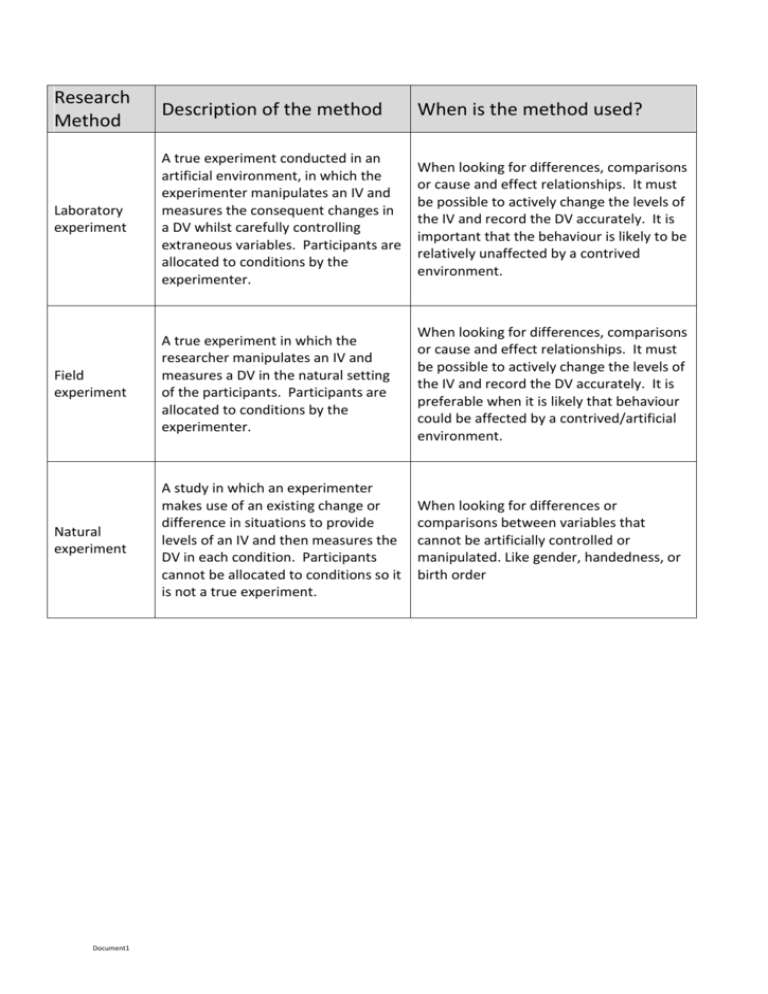
Research Method Description of the method When is the method used? Laboratory experiment A true experiment conducted in an artificial environment, in which the experimenter manipulates an IV and measures the consequent changes in a DV whilst carefully controlling extraneous variables. Participants are allocated to conditions by the experimenter. When looking for differences, comparisons or cause and effect relationships. It must be possible to actively change the levels of the IV and record the DV accurately. It is important that the behaviour is likely to be relatively unaffected by a contrived environment. Field experiment A true experiment in which the researcher manipulates an IV and measures a DV in the natural setting of the participants. Participants are allocated to conditions by the experimenter. When looking for differences, comparisons or cause and effect relationships. It must be possible to actively change the levels of the IV and record the DV accurately. It is preferable when it is likely that behaviour could be affected by a contrived/artificial environment. Natural experiment A study in which an experimenter makes use of an existing change or difference in situations to provide levels of an IV and then measures the DV in each condition. Participants cannot be allocated to conditions so it is not a true experiment. When looking for differences or comparisons between variables that cannot be artificially controlled or manipulated. Like gender, handedness, or birth order Document1 Correlational analysis A technique used to investigate a link between two measured variables. When looking for relationships between variables. Can be used when it is unethical or impractical to artificially control or manipulate variables. There must be two variables that can be measured. Observation A technique in which the researcher watches and records the behaviour of participants. This can be either in a situation that has been set up by the researcher (controlled observation) or in their own environment, for example, in the normal place for the activity being observed (naturalistic observation). The participants may or may not be aware of the presence of the observer (and the observer may or may not be a member of the group or activity being observed). Controlled observations are used to record behaviours that require an artificial situation, e.g when they are unlikely to arise spontaneously. If behaviours are unlikely to bge observable in an artificial situation, for example, are only likely to arise in real-life settings and/or social situations, naturalistic observations are used. The recording units must be observable behaviours rather than inferred states but may be variables that cannot be measured by asking questions. A self-report method used to obtain data by asking participants to provide information about themselves using written questions. When aiming to collect data about opinions or attitudes from a large sample and when the questions to be asked are largely straightforward and the same for every participant. Also if face-to-face contact might reduce the response rate or honesty. Questionnaire Document1 Interview A self-report method used to obtain data by asking participants to provide information about themselves by replying verbally to questions asked by an interviewer. When aiming to collect data from individuals using questions which may require explanation or when the questions may need to vary between participants. Case study A method which focuses on a single instance – e.g. one person or one family or institution – which is explored in detail. Other methods are used to gain a range of information, for example, observations, questionnaires and interviews. A history of the participant is obtained and this is related to their subsequent development. When varied, detailed data is required from one participant, especially if they are a rare or particularly interesting case. The aim of a case study may be to report on, investigate or help someone so the outcomes are also varied. Content analysis A method of indirect observation which assesses the themes and concepts expressed in communication media such as transcribed speech or the printed word. It could even be used to evaluate TV shows or adverts. It can produce qualitative or quantitative data. When researchers are interested in the overt and hidden meanings and messages present in communication. It can provide a way to compare historical and current trends, e.g. in gender stereotypes. Document1
